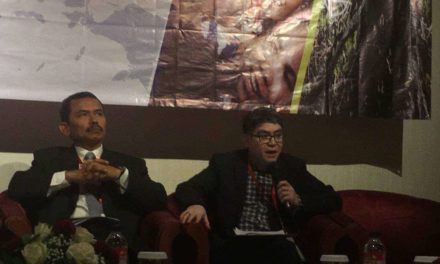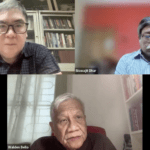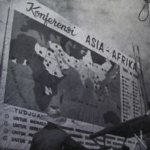By Shalmali Guttal
April 2002
The recently completed Inspection Process of the Samut Prakarn Wastewater Management Project (SPWMP) in Thailand has revealed fundamental inconsistencies in the accountability mechanisms of the Asian Development Bank (ADB).
The SPWMP is the first ADB supported project to be subjected to inspection and quite literally, has been a test case for the ADB’s fledgling Inspection Policy. However, every step of the inspection process, from the initial inspection request filed by the affected communities to the ADB Management’s response to the findings of the Bank Inspection Committee (BIC) and the Inspection Panel, have been wracked by suspicion, mistrust and finger-pointing among the ADB’s staff, Management and senior leadership.
In a recent meeting (March 25, 2002) of the ADB’s Board of Directors, Board Members were sharply divided about the extent of the ADB’s responsibility and culpability in the SPWMP, and about how the Bank should respond to the reports and recommendations of the Inspection Panel and BIC. While some Directors from the Bank’s Developing Member Countries (DMCs) rejected the findings and recommendations, most Directors representing donor countries accepted them. Both sides talked about how the Bank’s actions regarding the inspection results would set a “precedent,” but again, there were serious differences. Those who supported the findings and recommendations were concerned about setting precedents for what they believe are essential aspects of good governance; but those who rejected the findings and recommendations claimed that the SPWMP threatened to set a precedent for future challenges to the Bank’s authority, mandate and legitimacy.
These debates have been accompanied by a flurry of activities within the Bank regarding a review and update of the ADB’s Operation Manual (OM) and a review of its Inspection Policy. Two particularly interesting issues to emerge from all these activities are the controversy over the ADB’s Operational Manual (OM) and the nature of the ADB’s potential liability under the inspection function.
Hide and Seek in the Operations Manual
Debate over the ADB’s OM was sparked almost a year ago, when the ADB Board noted that the SPWMP Inspection Request referred to policies and procedures that were not included in the OM. The policies and procedures had, however, been approved by the Board in past meetings and for all practical purposes, were regarded by the Board as official ADB policies. The OM is quite literally a manual that lists all the operational policies and procedures that ADB staff and Management are expected to implement and be guided by in the course of their work. It soon became apparent that the OM had not been updated for several years and decisions made by the Board at earlier dates had not yet been included in the OM. This raised questions about what policies and procedures had ADB staff followed in their work in the past years, and what then was the Inspection Panel to examine: official, Board approved policies that were outside the OM, or, outdated policies in the OM. These problems were further compounded by parallel policy documents about the same procedures (such as supplementary financing for cost overruns) without clarity as to which policy documents were indeed the ones currently applicable. Predictably, this resulted in considerable controversy about which policy documents the Inspection Panel should have based its findings on, with ADB Management insisting that the documents they followed were the correct ones regardless of whether or not they were outdated, or in the OM.
If nothing else, at least the SPWMP catalysed the ADB into updating its OM with a view to which policies and procedures staff and Management are expected to implement. In the midst of continued heated arguments and recriminations among various sections of the Bank, the ADB Board and Management are struggling with some suprisingly basic questions about the purpose and scope of the OM. For example, would policies that are not included in the OM not be operationalised? Would policies not included in the OM be subject to inspection? Which policies should be included in the OM? And, which policies should be excluded from the OM?i
The SPWMP has also spurred the ADB to undertake a review of its Inspection Policy, which is expected to be completed by November 2002. However, recent discussions among ADB Board Members and Management indicate that regardless of whether a Board approved policy is included in the OM or not, the question of which policies are “inspectable” remains thorny and complex. In order to protect itself from future inspection processes, the ADB is likely to classify the elements of its operational policies and procedures as those that are mandatory, non-mandatory (or recommendatory) and mixed (i.e., have mandatory and recommendatory elements). These would then be grouped into different document packages that may be named OMs or “something more appropriate.”ii What would then be deemed “inspectable” are only those elements of operational policies and procedures that provide ADB staff with explicit directions on how to formulate, process and implement projects. Elements of vision, strategy, intention, and internal finance and administration (which certainly influence how projects are formulated and implemented) would not be “inspectable.”
An ADB insider revealed that the updating of the OM and the review of the Inspection Policy are moving towards arbitrarily limiting the number of “inspectable” policies and procedures. The less the ADB opens itself for investigation, the less responsibility it needs to assume for problems in its own projects.
Immunity: A Quagmire of Self-interest
The limits of the ADB’s Inspection Policy in terms of any real or tangible accountability by the institution are revealed in a paper from the ADB’s Secretary to the Directors regarding the question of the ADB’s potential liability under the Inspection Function.iii The paper provides a legal opinion about whether, and to what extent, the ADB is potentially liable for its failure to comply with its policies and procedure in the formulation, processing and/or implementation of a proposed or ongoing project.
The paper concludes that the by virtue of the immunity provided by its Charter, the ADB is not liable for any findings of wrongdoing through the Inspection Function and is protected from any legal action that might arise from such findings:
“In short, the immunities and privileges ADB enjoys effectively shield ADB from the barrage of competing, if not conflicting, demands that could be made on the ADB in local jurisdiction from a large number of various groups, both official and private of its member countries. Plainly, ADB’s immunities and privileges support the performance of its functions.”iv
The rationale for the ADB’s Inspection Function is based on the immunity it enjoys. By its own admission, the ADB’s immunity from all forms of legal processes and local jurisdiction in any member country “denied citizens and other relevant people access to effective official fora to air their complaints and seek proper remedies. “Therefore, it needed another forum by which it could claim commitment to policies of transparency, accountability and participation that reflected the “peoples’ empowerment movement around the world.”v
The paper identifies two objectives of the Inspection Function: 1) to allow private individuals access to the ADB’s internal decision making process, and 2) to safeguard, at the same time, against the possibility of the ADB being held liable by a Third Party for material injuries sustained by private individuals. The Inspection Function, then, was never intended or designed to offer complainants or injured parties any redress:
“The establishment of the Inspection Function was, therefore, designed to allow private individuals who are materially and adversely affected by ADB’s project in a DMC to lodge a complaint in order to seek proper remedies. Nevertheless, there is one seemingly self-contradictory aspect about the reason for the Inspection Function that needs to be firmly understood. That is, the absence of access to effective remedies on account of ADB’s immunity from local jurisdiction is the essential reason for the establishment of the Inspection Function as an internal mechanism…. The Inspection Function cannot be an instrument by which to deprive ADB of its immunity protection…”vi
According to the ADB’s internal governance mechanisms, final decisions about the Bank’s compliance to policies and procedures, and assessment of institutional and staff conduct rest with the ADB’s Board of Directors. The ADB then, is its own investigator, judge and jury, with no obligations of external, public accountability. The BIC investigates complaints by an applicant group not with the intention of helping the applicant group to seek “proper remedies,” but with the intention of making ADB’s operations more accountable to its DMCs.
“The obligations imposed on ADB under its operational policies and procedures, e.g., ‘participatory consultation,’ do not create the corresponding rights on the part of local private individuals. ADB’s contractual obligations are, first and foremost, with the Government…..The Policy does not provide a mechanism of indemnity or compensation for such material infringements of the rights and interests of the applicant group. Nor is the Inspection Function a mechanism for establishing liability for such infringements.”vii
The convoluted workings of the Inspection Policy also allow ADB Management to place the burden of proof in inspection requests on applicant groups, thus contradicting the “non-judicial” nature of the inspection process and undermining independent investigations of policy violations and wrong doing. In refuting the inspection request by local residents in Sri Lanka for the Southern Transport Development Project, ADB Management claimed:
“There should be no further consideration of the Request since it not only fails to show non compliance by ADB with ADB’s Involuntary Resettlement Policy, but also attempts to undermine the balance in ADB’s Involuntary Resettlement Policy as supported by the CEA. It should also be noted that further consideration of the Request under ADB’s Inspection Policy could undermine the legal framework in Sri Lanka and the contract between ADB and Sri Lanka.”viii
And further,
“The Requester does not provide evidence of authority to represent its alleged constituency, many of the allegations do not concern acts or omissions by ADB, the allegations against ADB are not supported by sufficient evidence, and the requester is unable to demonstrate direct and material adverse effect caused by ADB. Management submits that these multiple grounds for ineligibility cumulatively warrant a BIC recommendation of “clear ineligibility” with regard to the Request.”
In sum, established as a purely internal administrative process, the ADB’s Inspection Function does not offer any avenue of redress against wrong-doing, malpractice, or violation of even its own policies and procedures to those negatively affected by an ADB project or programme. Despite its rhetoric of poverty reduction, good governance and promoting development, the ADB is protected from functioning as a responsible public institution by its Charter. Its Inspection Function is not designed to open channels for fair hearing and open discussion with those who ADB projects are supposed to benefit–i.e., the citizens of a DMC. On the contrary, it is designed to safeguard the ADB’s immunity and internal decision-making from the messy realities of lost livelihoods, degraded and polluted environments, and erosion of rights and entitlements. Not only is the ADB safe from public scrutiny and accountability, but also, its contractual relationship with the Government ensures that project or programme imperfections and problems can be handled in a closed, exclusive group of project implementers (the Government) and ADB Management.
In such a system, local communities, project-affected peoples and other citizens have no place or voice with the ADB and even their own governments. The ADB’s Inspection Function and Policy are a mockery of any universally accepted precept of good governance. Unless radically amended, the Inspection Function and Policy will continue to provide the ADB with more ways to evade responsibility for poor performance, bad decisions and actions, and harmful projects
Endnotes
i. Memo from the Director General of the SPD to the President, Secretary, General Counsel, Directors General and Principal Directors, 15 January, 2002.
ii. Memo from the Secretary to the Directors and Alternate Directors, 6 March, 2002.
iii. Samut Prakarn Wastewater Management Project, Legal Opinion on the Question of ADB’s Potential Liability Under the Inspection Function. 26 December, 2001.
iv. Ibid.
v. Ibid.
vi. Ibid.
vii. Samut Prakarn Wastewater Management Project, Legal Opinion on the Question of ADB’s Potential Liability Under the Inspection Function. 26 December, 2001.
viii. Response of ADB Management to the Request for Inspection of the STDP, Sri Lanka, February 2002. Paragraphs 39 and 103.
*Shalmali Guttal is the Coordinator of the Micro-Macro Issues Linking Programme at Focus on the Global South ([email protected]).







